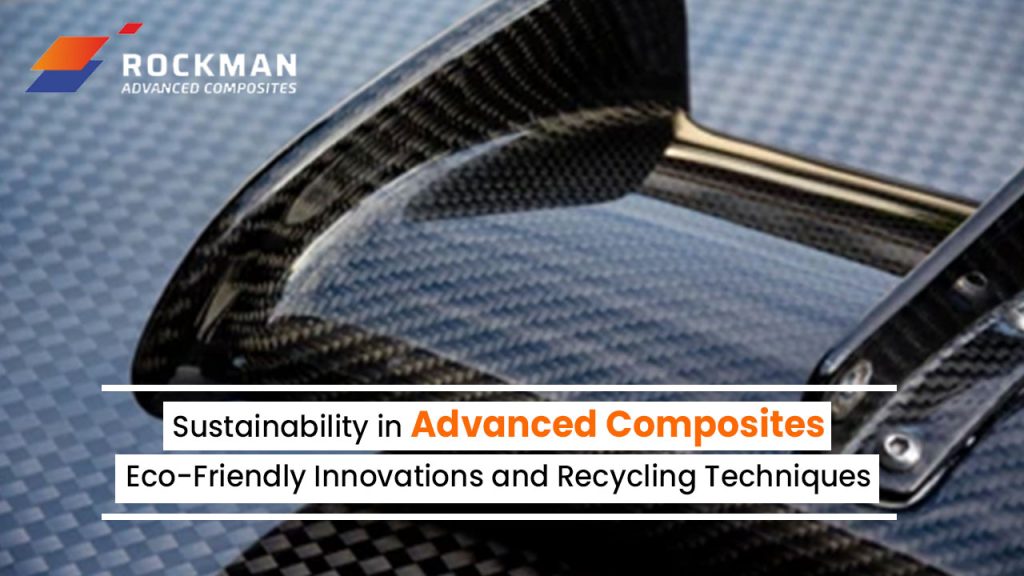Advanced composites are engineering materials comprising two or more constituent materials having diverse properties. The engineering materials are valued for their high strength, lightweight, and corrosion-resistance properties, making them ideal for a wide range of industries. However, these desirable properties are also creating challenges, particularly in terms of recyclability and disposal. Effectively separating and recovering the constituent materials is hard to achieve with traditional recycling methods, thereby leading to limited reuse opportunities and high waste generation. This is further posing environmental risks and undermining the economic practicality of composite manufacturing. Thus, advanced composite manufacturers are making a move towards sustainable solutions by discovering eco-friendly innovations and recycling techniques for shaping a greener future.
The Environmental Challenge of Advanced Composites
Advanced composite materials like carbon fiber-reinforced polymers and glass fiber-reinforced polymers were highly preferred earlier because of their excellent mechanical properties. The long lifespan and complex composition of these materials pose significant environmental challenges, as recycling of these materials is difficult and leads to resource depletion and landfill accumulation. Besides, manufacturing of these advanced composites consumes high energy and carbon emissions. However, advanced composite manufacturers are addressing these challenges by adopting innovative approaches in selecting materials, as well as in manufacturing and recycling.
Eco-Friendly Innovations in Advanced Composites
Manufacturers are making use of eco-friendly innovations in creating advanced composites by focusing on using renewable and natural fibers like jute, flax, bamboo, and hemp as reinforcement within a polymer matrix derived from bio-based sources. The manufactured bio composites significantly reduce the environmental impact and optimise manufacturing processes to reduce waste and energy consumption. Some eco-friendly innovations include:
Bio-Based Composites – Emphasis is given to producing bio-based composites to replace petroleum-derived resins with natural alternatives like soy-based and other bio-resins. This further leads to reducing dependence on fossil fuels and reducing the carbon footprint of composite production.
Natural Fiber Composites – Natural fibers are increasingly being used in the manufacturing of composite materials that are biodegradable, renewable, and require less energy-intensive processing. Thus, these fibers have emerged as a sustainable alternative for various applications.
Recyclable Thermoplastic Composites – Traditional thermoset composites that were problematic to recycle are replaced by thermoplastic composites that can easily be reused and reshaped. Besides, these composites are easy to recycle, making them ideal for circular economy applications in the automotive and aerospace industries.
Low-Impact Manufacturing Techniques
Advanced composites manufacturers are making use of low-impact manufacturing techniques to focus on reducing waste, and energy consumption, and using environmentally friendly materials in the production.
Resin Infusion – In this technique, the resin is precisely injected into a fiber preform kept in a mold. This further reduces excess usage and waste of resin.
Vacuum Bagging – It is also an environment-friendly composite manufacturing process in which vacuum pressure is applied to a fiber preform within a mold. This ensures fiber consolidation and it is used with low-VOC resins that reduce emissions and improve material efficiency.
Hand Layup – Fiber layers are manually applied with low volatile organic compound resins that result in less harmful emissions during the production process.
Pultrusion – Long and consistent composite profiles are produced through a continuous process in which a fiber-resin mixture is pulled through a die. This process results in minimal wastage.
Recycling Techniques for Advanced Composites
Advanced composites are recycled to separate the reinforcing fibers from the polymer resin matrix to recover valuable fiber material that can be further reused in new composite parts. Eco-friendly recycling techniques are adopted by the manufacturers to reduce environmental impact. Some of the recycling techniques adopted include:
Mechanical Recycling – In this recycling technique, composite waste is grinded or milled into small particles that are used as fillers in new composite materials.
Thermal Recycling – The composite waste in this recycling process is heated in an oxygen-free environment to break down the polymer matrix and recover valuable fibers like carbon or glass that are reused in composite manufacturing. This further reduces the need for virgin materials.
Chemical Recycling – This recycling technique makes use of chemical solvents to break down the polymer matrix. This leads to recovering fiber with minimal damage and provides high-quality reclaimed fibers. This has emerged as the most promising recycling technology for composite sustainability.
Summary
Sustainability in advanced composites no longer remains a goal but has become a necessity. Industries are reducing environmental impact and maintaining performance standards by switching to bio-based materials, recyclable thermoplastics, and advanced recycling techniques. With ongoing research and innovation, a circular economy for advanced composites is becoming a reality and is creating the path for a more sustainable future.








